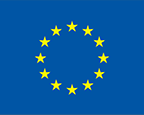Occurrence, bioavailability and bioaccumulation
he highest POPs concentrations in Arctic environments have been found in marine organisms due to bioaccumulation along the Arctic marine food webs. However, the transfer from the abiotic into the biotic compartment of the Arctic ecosystems depend on physical-chemical properties of the compound, the composition of the abiotic medium, as well as exchange processes with the organisms and surrounding environment (usually at low trophic levels).
Biologically available fractions of contaminants
The amount of POPs associated with the fraction of the abiotic medium transferred into an organism is considered as the bioavailable fraction for the specific abiotic medium investigated. Previous investigations have shown that the particulate composition in marine waters (distribution between dissolved and particulate phase) directly influences the partitioning of POPs. Temperature change has a direct influence on these processes and alters the partitioning of organic compounds between the dissolved and particulate phases in water and air. In addition, because many contaminants are strongly particle-associated, contaminated sediments can function as important secondary pollution sources for a long time after the primary sources have been stopped (Saloranta et al., 2011).
Within the framework of the ArcRisk project, food items, such as salmon, smoked halibut, whale and seal meat were purchased from the local market in Nuuk, Western Greenland, and examined for POP concentrations and distribution patterns. The concentrations for all pesticides were in the lower to medium (ng/g) range. The narwhal mattak (a local delicacy; blubber and skin from narwhal) samples showed the highest PCB and pesticide concentrations. These samples were analysed for chiral pesticides (α-HCH, trans- and cis-chlordane and the metabolite oxychlordane) as well. Chiral environmental pollutants are excellent indicators for the estimation of bioavailability and biotransformation potential in biological systems, even on an individual basis for top predator organisms (Kallenborn and Hühnerfuss, 2001; Wong and Bidleman, 2011). If the enantiomeric fraction (EF=EF1/(EF1+EF2) deviates from racemic distribution of enantiomers (EF=0.5), it is mainly caused by direct enantioselective biodegradation and/or accumulation. Enantioselective analytical methods can therefore help to estimate the bioavailability and biotransformation potential for chiral organic pollutants. The largest deviation from racemic distribution among the Greenlandic food items was found for all chiral compounds in narwhal. Many marine mammals (e.g., narwhal) have a notable metabolic capacity for biotransformation of POPs. Thus, potentially harmful transformation products are found in marine mammal tissues as a considerable contaminant contribution. These findings are considered as an indication of the above-average metabolic capacity of narwhals for biotransformation of the selected chiral organic pollutants.
Factors affecting bioavailability
Bioaccumulation factors (BAFs) determine the potential for accumulation of POPs in species. Factors presented within a suite of different studies are listed, see table below, for toxaphene, chlorinated benzenes, HCHs, DDTs, chlorobornanes, PCBs and PBDEs in plankton (Calanus spp) and beluga – ringed seal (PCB and PBDE). How much of a POP that is taken up in animals are determined by different factors, where the bioconcentration factor (BCF) is one of them. Bioconcentration factors means that POPs are up-concentrated from water to animals – like zooplankton at low trophic levels. The higher Kow (partitioning coefficient octanol-water), the higher BCF.






















